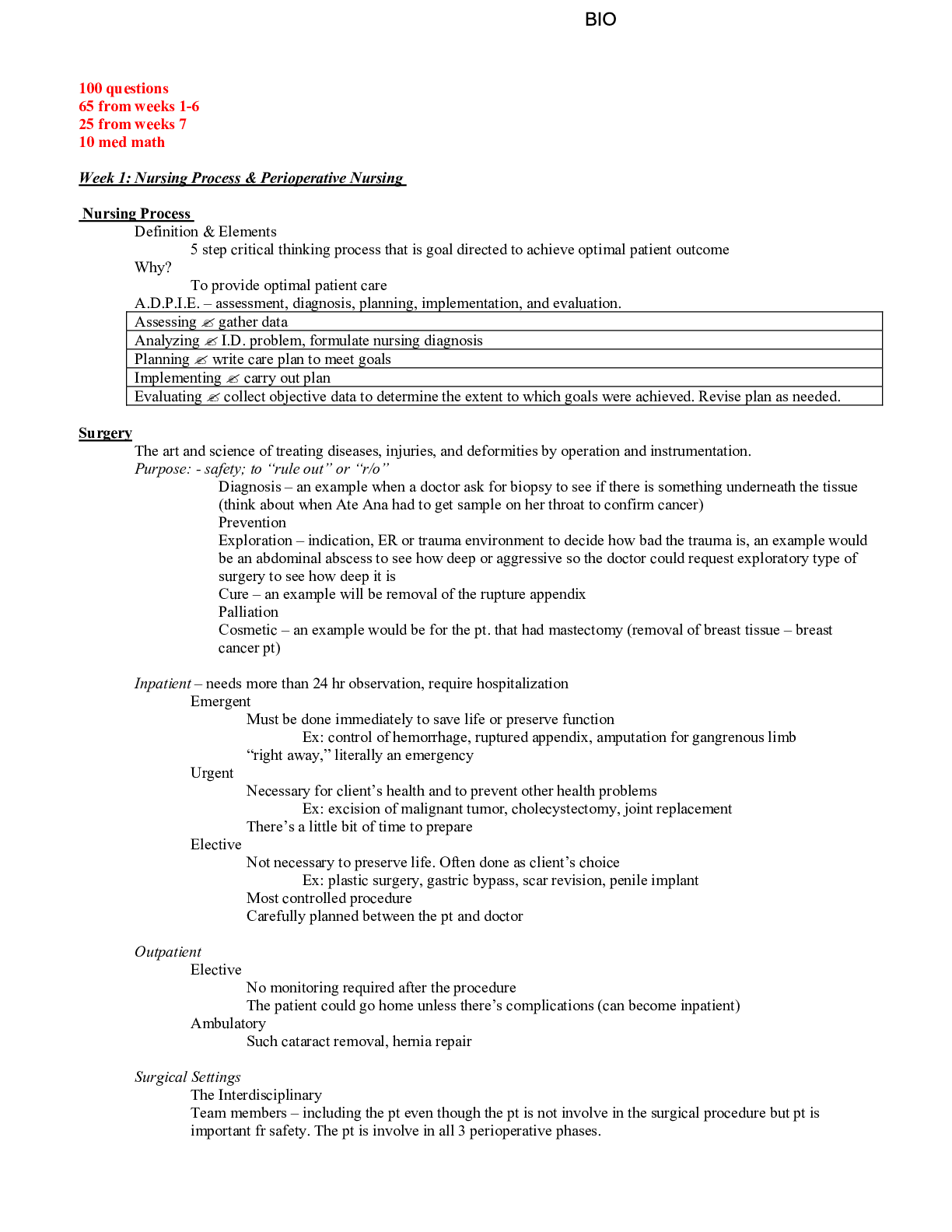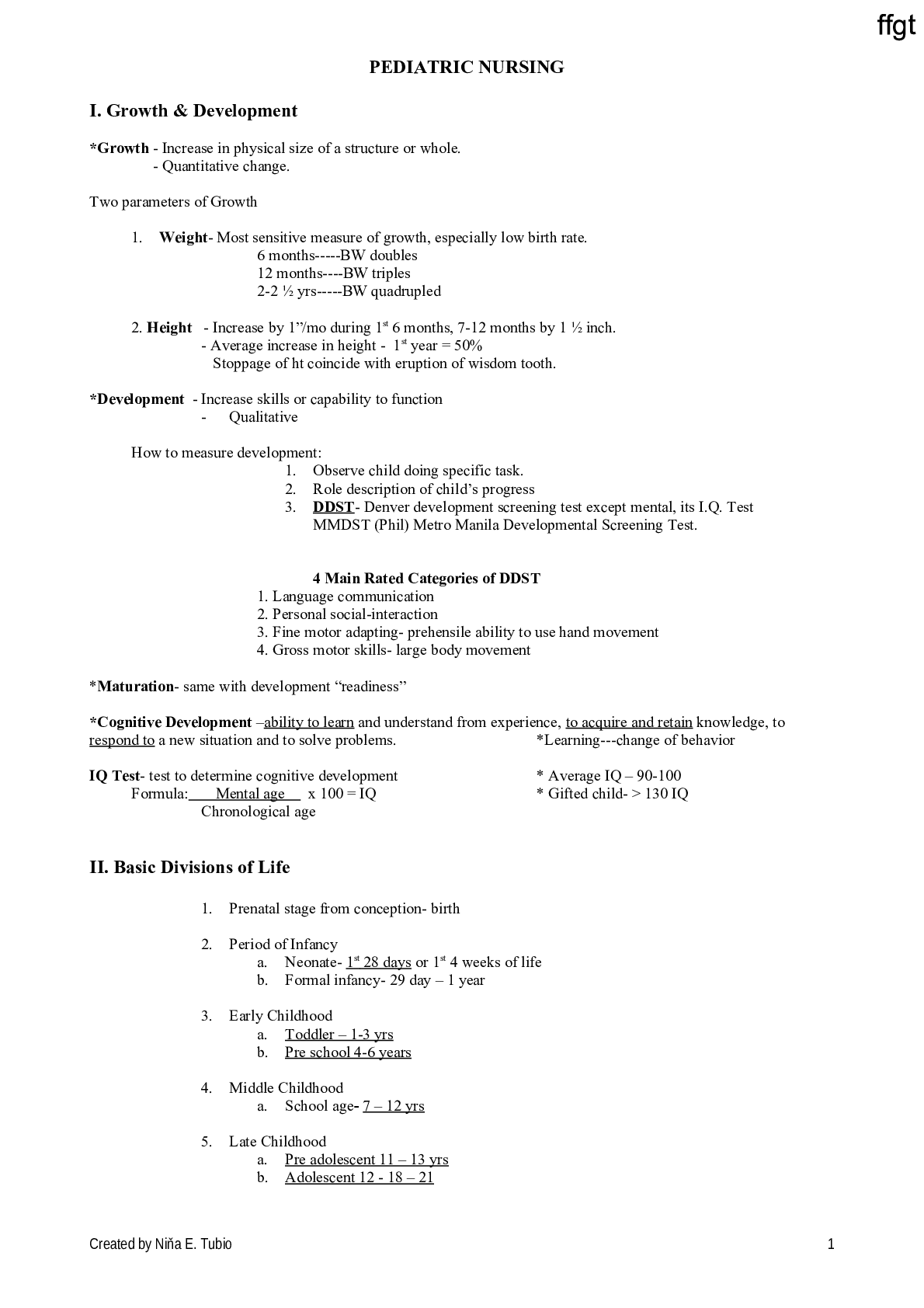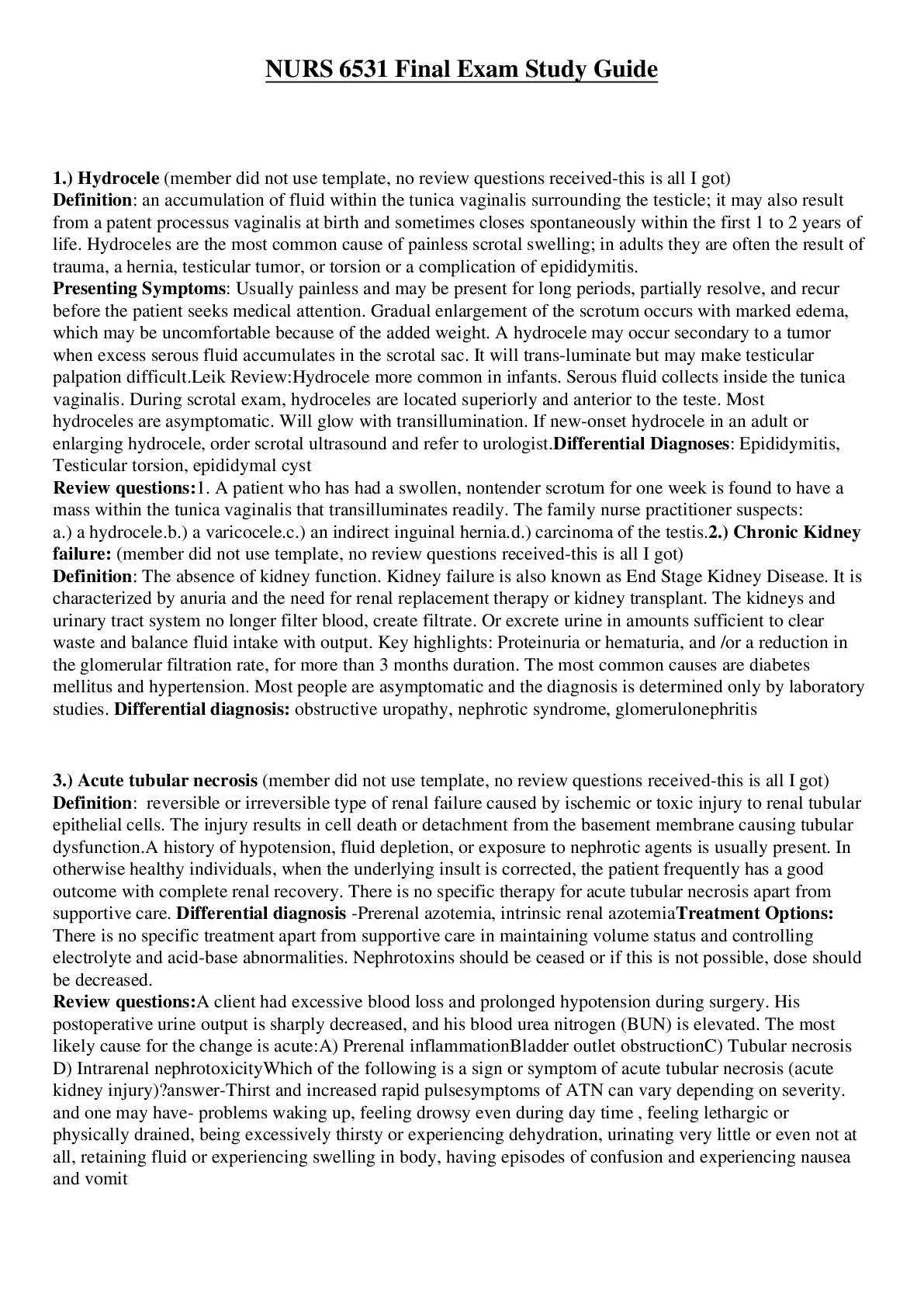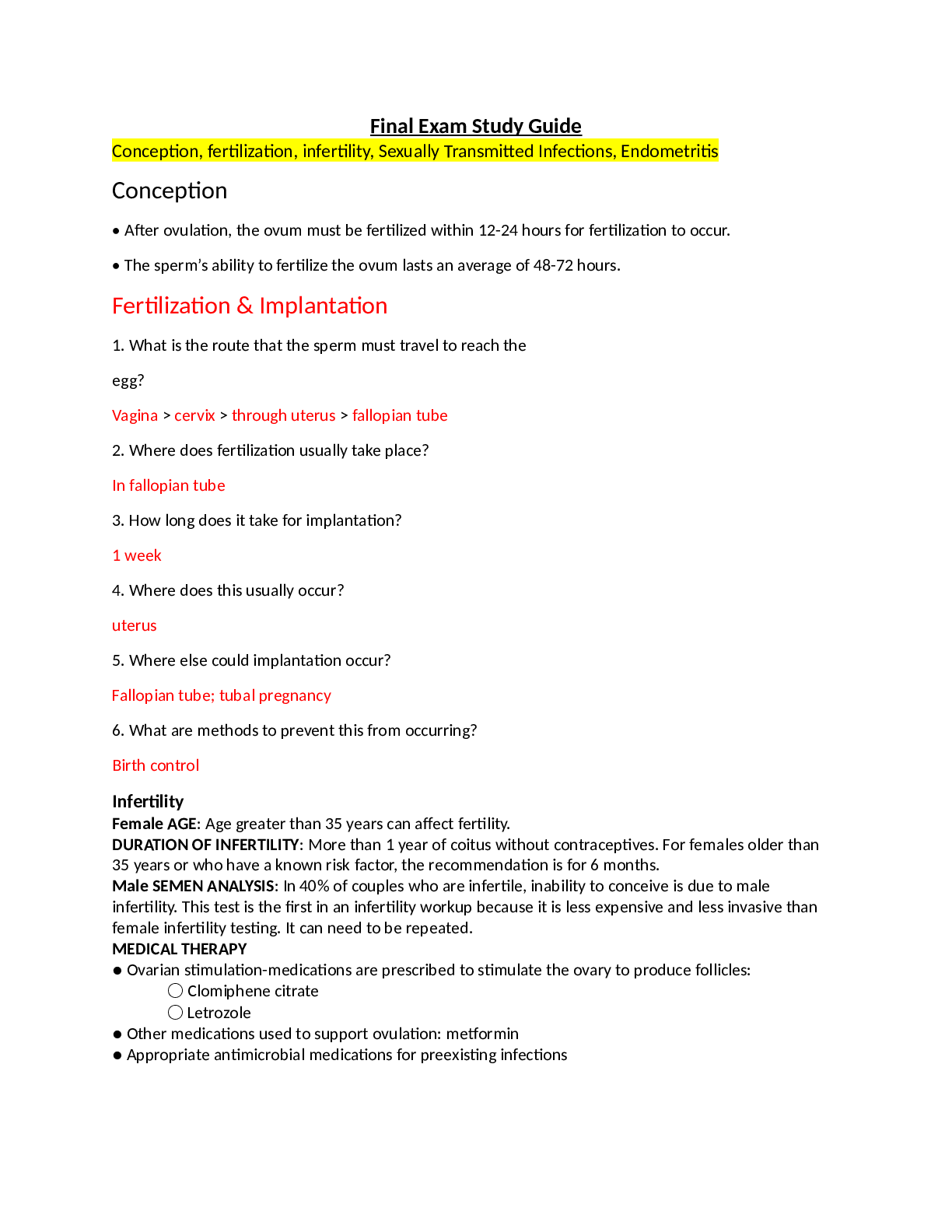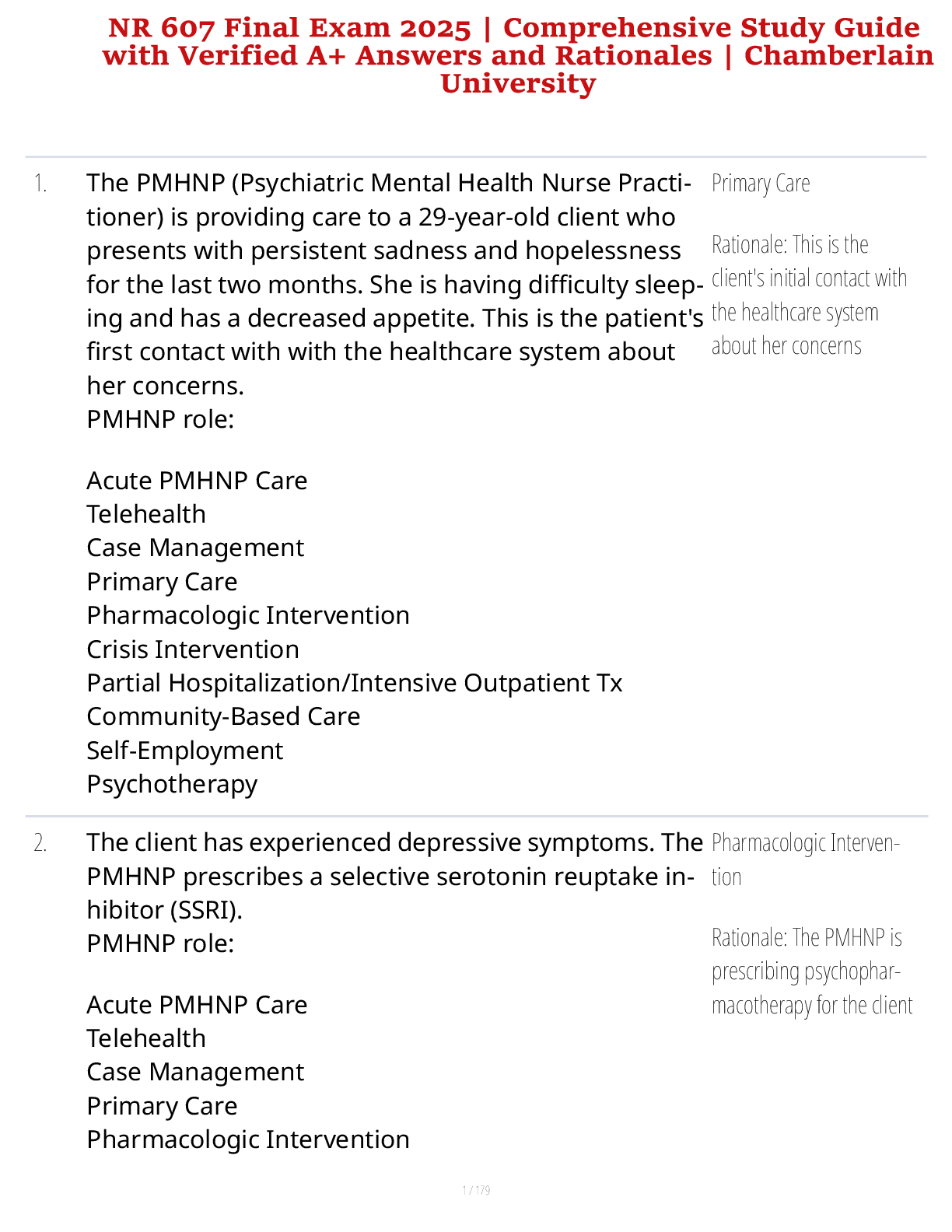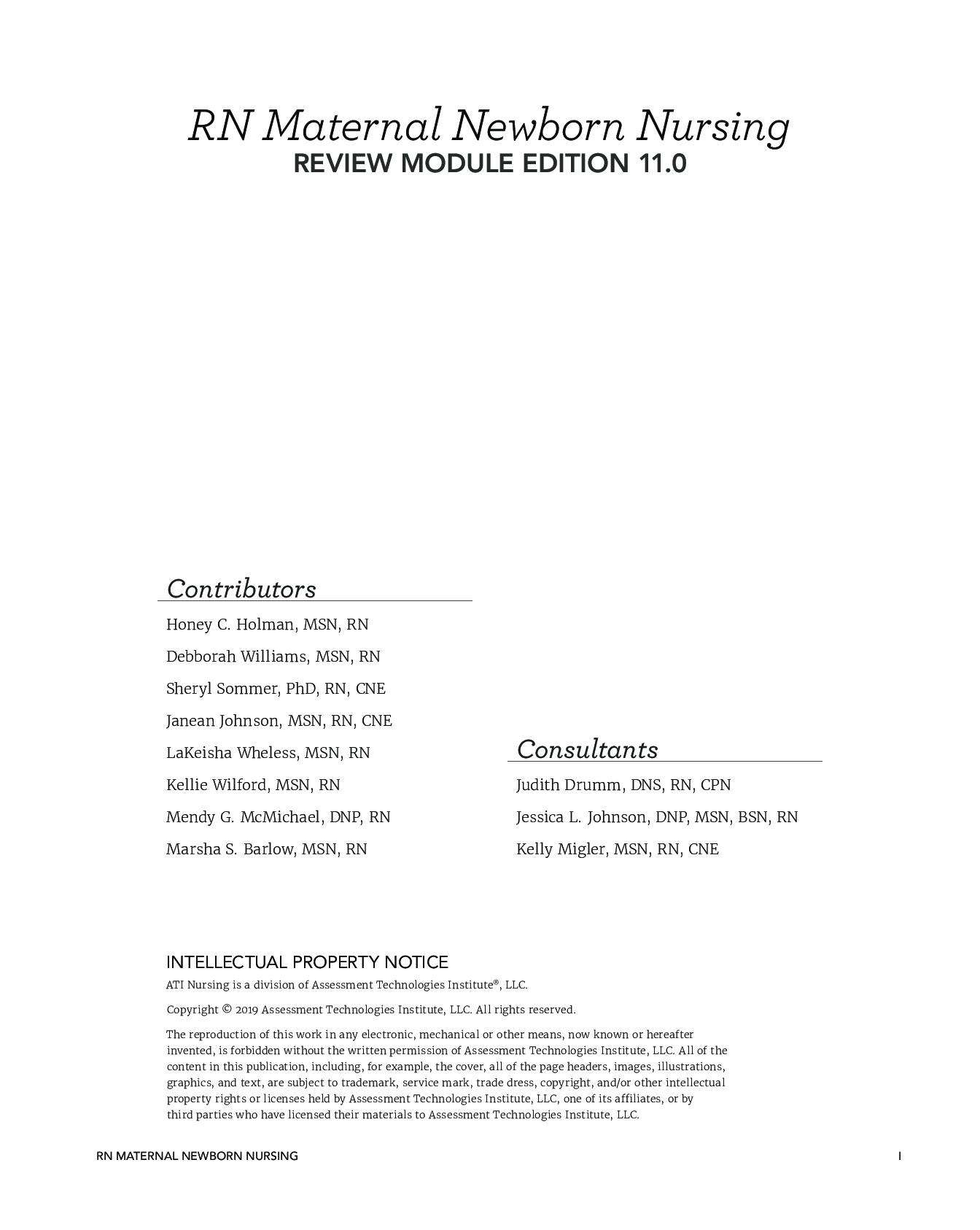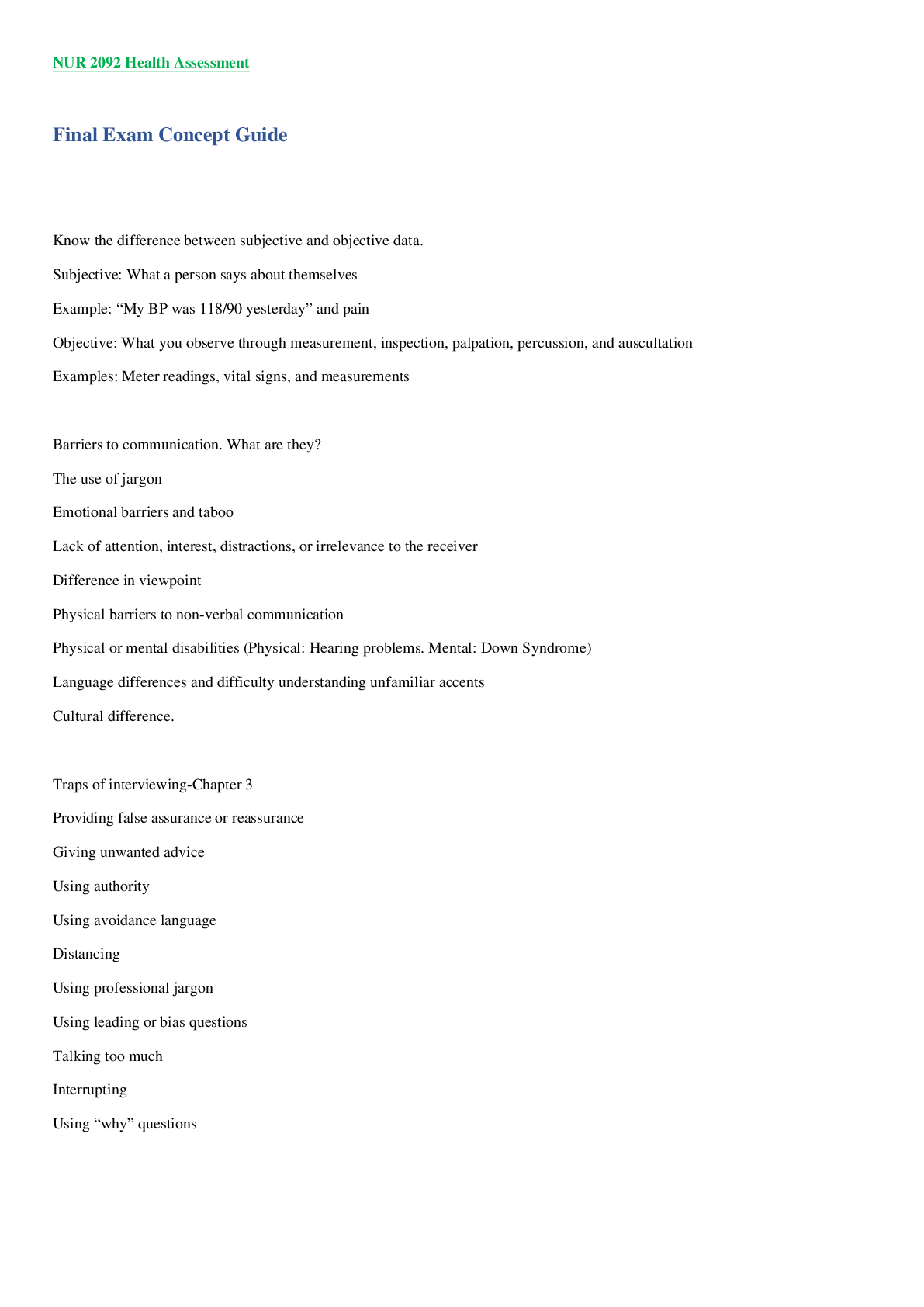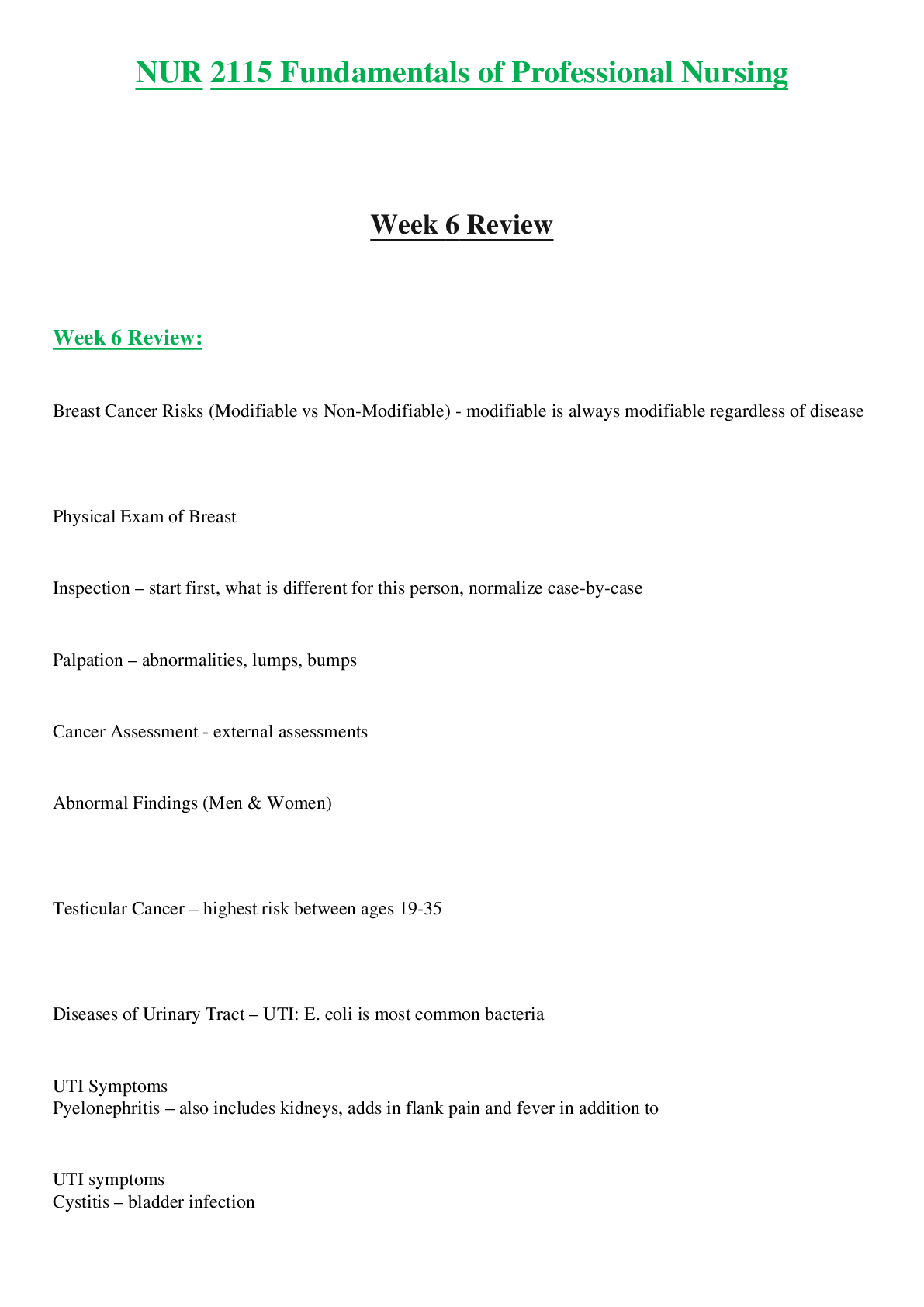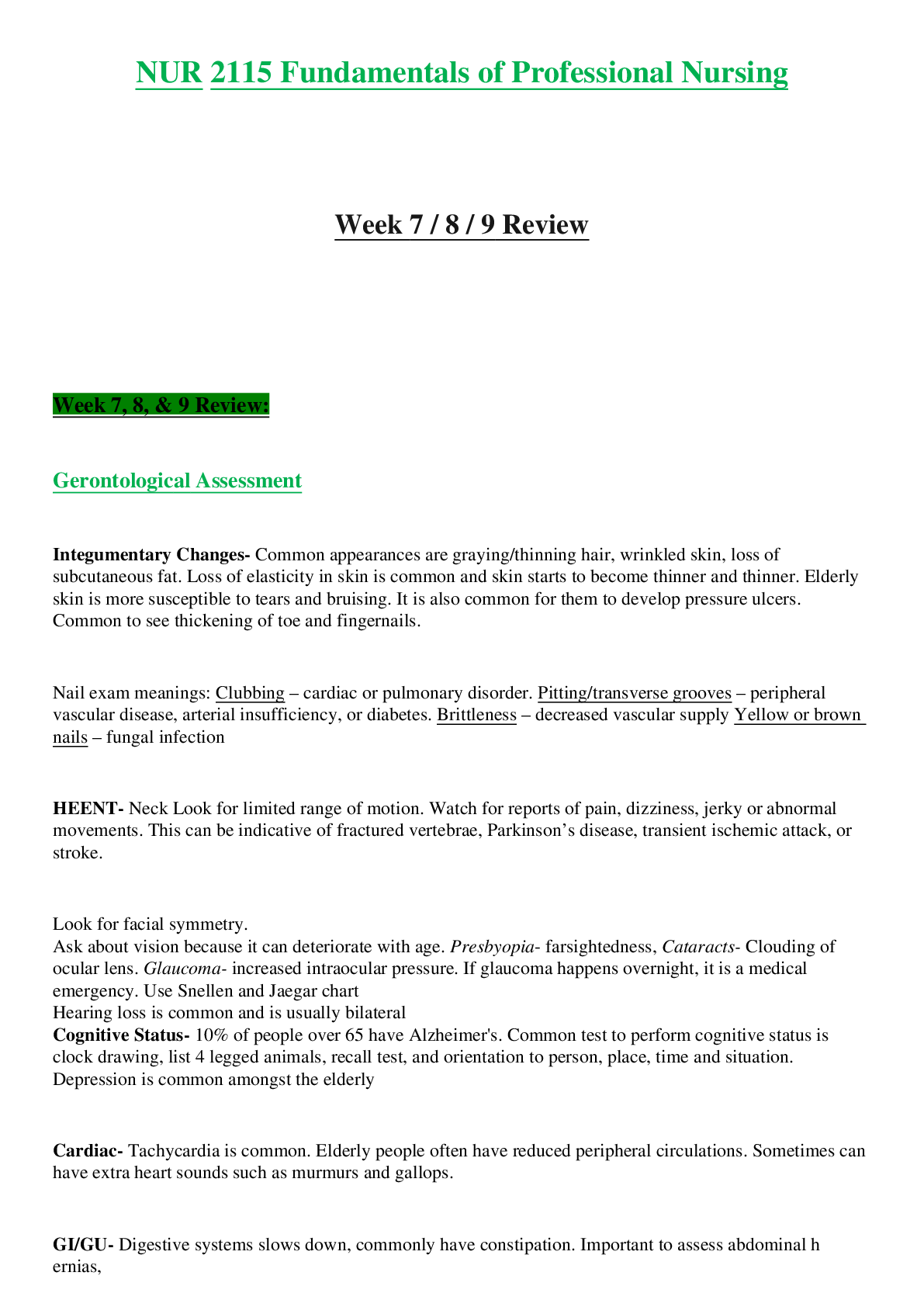Health Care > STUDY GUIDE > Pharmacology Workbook: Pharmacology NR293 (All)
Pharmacology Workbook: Pharmacology NR293
Document Content and Description Below
Pharmacology Workbook: Pharmacology NR293 Course NR293 Pharmacology: ANSWER KEY Exam Exam 2: Week 5- Chapters 22, 23, 24, 25, 26, 27, 28, 54…and concepts from preventing med errors and patient ed ... ucation from class discussion & class ROK. Key Concepts Chapters Student Notes Antihypertensive Drugs Chapter 22 1. What should we consider when treating a pregnant hypertensive client with medication? Drug transfer to fetus through placenta: ACE/ARBs are Category D during 2nd/3rd trimester. Commonly use methyldopa (Aldomet) as first choice; other classes may be used. 2. What medication(s) would be considered first line? Methyldopa commonly first line in pregnancy for HTN What medication(s) would be contraindicated? ACE & ARBS are Cat D in 2nd/3rd trimester 3. List nursing considerations for hypertension treatment in the elderly? Start low; go slow!! Check for drug interactions, due to elderly taking more medications (i.e. Polypharmacy risk!!). They may not tolerate drugs as well, given age and underlying medical conditions. Counsel on increased risk for potential for orthostatic hypotension and increased risk possible falls: Frequently monitor vital signs, especially blood pressure and pulse rate, when the patient is taking any of the adrenergic drugs because of their cardiovascular and cerebrovascular effects. Use of Beta-Adrenergic Agonists in Elderly (Beta Blockers)…IMPORTANT!!! ***Baroreceptors do not work as effectively in the elderly patient. Reduced baroreceptor activity may lead to orthostatic hypotension, and increase risk of falls, especially when blood pressure medications are taken, including Beta Blockers. Teach client about these potential effects and safety measures to avoid falls. • Several physiologic changes occur in the cardiovascular system of the older adult, including a decline in the efficiency and contractile ability of the heart muscle, decrease in cardiac output, and diminished stroke volume. Stress, heat, and use of betaadrenergic agonists may lead to significant increases in blood pressure and pulse rate. • Advise patients that any occurrence of chest pain, palpitations, headache, or seizures must be reported immediately to the prescriber and/or emergency care accessed. • Caution patients about the use of over-the-counter drugs, herbals, supplements, and other medications. This caution is due to possible drug-drug interactions as well as the elderly person's increased sensitivity to many drugs and other chemicals. (Lilley 303) Briefly describe how each drug class generally works: The sampling of drugs we will be focusing on are listed below. Drug class Brief: Mechanism of Action Central Acting Alpha2Adrenergic (Clonidine & Methydopa) Decrease SNS outflow from the brain: decrease the action of “flight or fright”, which actually starts in the brain when it recognizes danger or senses fear Alpha blockers-peripheral acting (Prazosin, Doxasozin) Block alpha receptors in the blood vessels= vasodilation: more chance for orthostatic hypotension due to the alpha blockade. Beta Blockers- (Atenolol; Labetolol; Metoprolol) Block beta receptors in the heart- decrease heart rate and contractility; also, block renin release (a vasoconstrictor) from the kidneys Dual-Action Alpha1 & Beta receptor blocker (carvedilol; labetolol) Blocks beta and alpha receptor (as above): more chance for orthostatic hypotension due to the alpha blockade, especially in the elderly. Angiotensin-converting enzyme inhibitors (ACE inhibitors) (Lisinopril) Inhibit the angiotensin converting enzyme, so that A1 doesn’t convert to A2; A2 is a vasoconstrictor and also stimulates release of Aldosterone, which causes Na+/H20 retention. SO, THESE ACTIONS ARE BLOCKED. Angiotensin II (A2)receptor blockers (ARBS) (Losarten) These drugs block Angiotensin 2 from activating cell receptor sites: A2 is a vasoconstrictor and also activates Aldosterone, which causes Na+/H20 retention (overall effect is similar to ACE) Calcium channel blockers (Amlodipine, Dilitiazem, Procardia) Block the influx of calcium needed for smooth muscle contraction; thus you get smooth muscle relaxation & decrease in BP; they also act on the depolarization for cardiac conduction, so they help with SVT/atrial dysrhythmias like Atrial fibrillation/A flutter. Vasodilators Direct vasodilate the blood vessels= decreased blood pressure; more risk of orthostasis. Diuretics ( Review Chapter 28) 0 8/20/17 References from textbook & study guide of: Lilley, L. L., Collins, S. R., Snyder, J. S. (2014). Pharmacology and the Nursing Process, 7th Edition. Mosby. Nitropursside (hypertensive crisis) Used in ICU; Constant IV infusion that vasodilates arteries and veins Put the following drug class into the appropriate indication: (not every column will be completely filled): Diuretics Angiotensin converting enzyme inhibitors (ACE inhibitors) Alpha Blocker Alpha1 & Beta receptor blockers-Dual-Action (ex. carvedilol & labetalol) Angiotensin II receptor blockers (ARB’s) Calcium channel blockers Vasodilators Beta Blocker Nitrites Hypertension Heart Failure Angina Antidysrhythmics Diuretics A ACE or ARB Beta blockers Beta blockers ACE B beta blocker Nitrites Calcium channel blockers ARB C Cardiac glycosides Calcium channel blockers Beta blockers D Diuretics (The rest are listed in classes I-IV) Calcium channel Alpha-beta receptor blocker Alpha blocker Beta blocker Vasodilators True/False: 1. The elderly population tolerate antihypertensive medication without any increase in side effects. T or F Especially susceptible to orthostatic BP & risk of fall increases. Also, creatinine & K+ elevations may occur more often 2. Antihypertensive drugs that are most likely to cause a hypertensive crisis if abruptly stopped are clonidine & beta blockers. T or F Educate clients carefully! 3. You will not need to monitor any lab values if taking an ACE or ARB blood pressure medication for hypertension. T or F Monitor creatinine and potassium, which can rise. Also, monitor for decreased urine output, which may indicate kidney problems 4. Erectile dysfunction can occur with any antihypertensive medications, but is more common with beta blockers. T or F 5. Propranolol may be prescribed for migraines, hyperthyroidism, tremors, or anxiety, such as public speaking. T or F ADRENERGICS Clonidine (Centrally Alpha Adrenergic) Methyldopa (Central alpha blocker) Labetolol; Atenolol; & Metoprolol Carvedilol (Dual-Action Alpha & Beta blocker) Drug Class & Indication(s) Clonidine: HTN; Opioid/ETOH abuse during recovery Methyldopa: *Frequently used in pregnancy Beta-blockers; (carvediolol has a dual action) HTN, CHF,MI, angina (Beta blockers also used: migraines, anxiety, tremor) Contraindications *Asthma-CAUTION: can induce bronchospasm if noncardiac selective * Heart block/ bradycardia Common Adverse Effects Drowsy, dizziness, fatigue, orthostatic hypotension Bradycardia, fatigue, insomnia, weakness, erectile dysfunction (impotence); depression; heart failure (***think about the 6- B’s below) Major Interactions (ex. CYP450) Nurse Considerations: (Examples: Age, renal/hepatic precautions, safety with administration, lab monitoring, teaching) *Educate client on potential for rebound hypertension if abruptly stopped; *teach to make position changes slowly. * Avoid hot baths/showers & saunas. *Avoid alcohol *end in olol *BOYS-More likely to cause erectile dysfunction; * BP-Educate client on potential for rebound hypertension if abruptly stopped. *BLOOD GLUCOSE: May mask hypoglycemia in a diabetic client * BRONCHOSPASM: May cause bronchospasm with Asthma/COPD (monitor for shortness of breath) * BRADYCARDIA: Teach client to check BP and pulse *BAD MOOD: May develop depression & persistent fatigue 1 8/20/17 References from textbook & study guide of: Lilley, L. L., Collins, S. R., Snyder, J. S. (2014). Pharmacology and the Nursing Process, 7th Edition. Mosby. CARVEDIOLOL-*More risk of Orthostatic hypotension, especially in elderly due to the alpha blockade. Drug name Lisinopril (ACE-I)/ end in “pril” Losartan (ARB)/ end in “sartan” Amlodipine ; Dilitiazem Nifedipine Drug Class & Indication(s) Ace Inhibitor/”pril” Indicated: HTN, CHF, CKD, DM Angiotensin receptor blocker- “sartan” Calcium channel blockers/ HTN, Angina, Printzmental’s angina; SVT/dysrhythmias; also Raynaud’s disease & migraines Contraindications Cat D pregnancy Common Adverse Effects Dry cough, fatigue, elevated K+, increase in creatinine: impaired taste; angioedema: monitor LFT’s Constipation, peripheral edema, bradycardia, heart block Major Interactions (ex. CYP450) NSAIDs CYP450 Nurse Considerations: (Examples: Age, renal/hepatic precautions, safety with administration, lab monitoring, teaching) *end in pril Monitor for serious adverse reaction- Angioedema: stop drug! *Monitor for 1st dose syncope; (so remain supine after 1st dose for at least 3 hours) *end in pine or zem * Avoid grapefruit juice & high fat meals *Teach pt to monitor BP & pulse: call doctor if <60 or > 100) *Take before meals (1 hour before or 2 hours after.) [Show More]
Last updated: 3 years ago
Preview 1 out of 14 pages
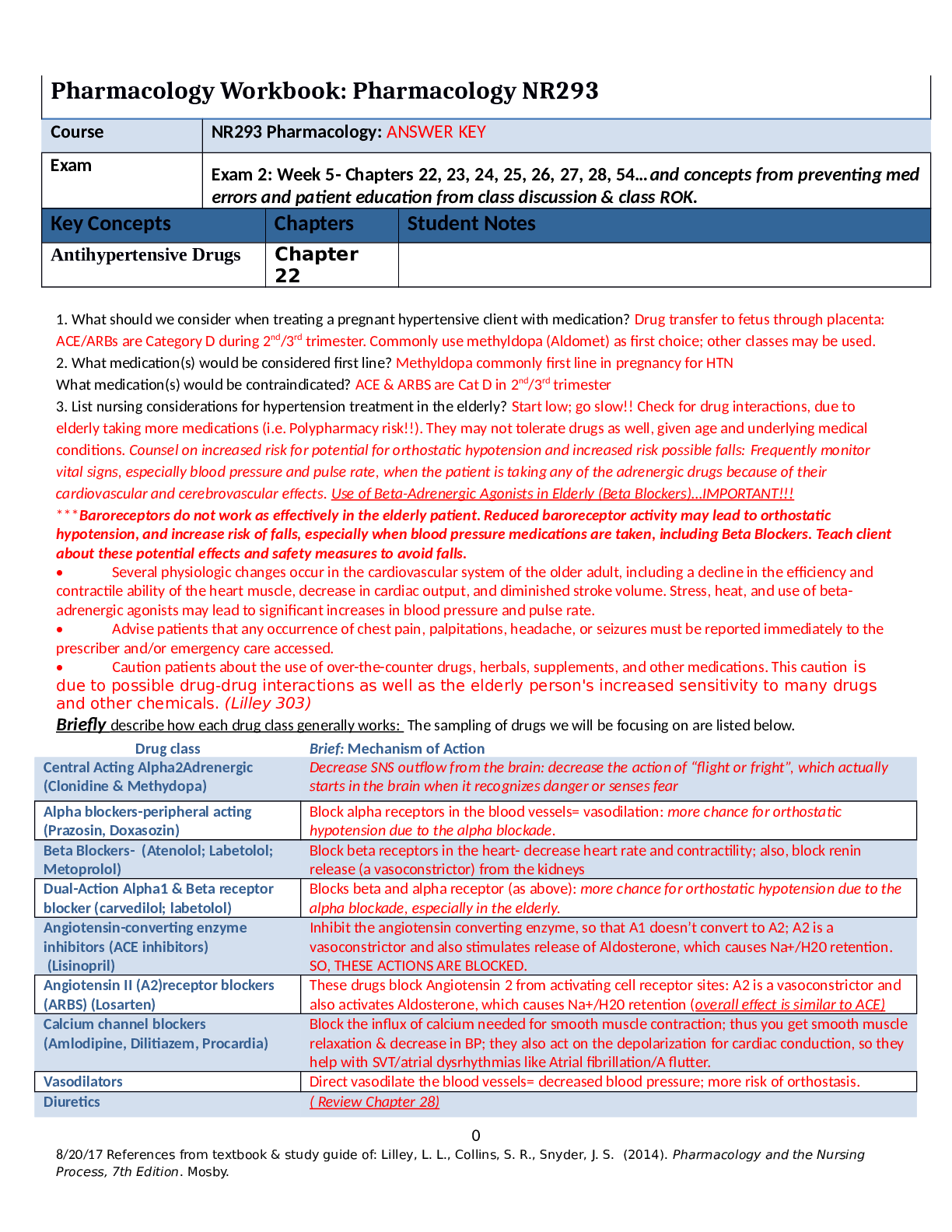
Buy this document to get the full access instantly
Instant Download Access after purchase
Buy NowInstant download
We Accept:

Reviews( 0 )
$7.00
Can't find what you want? Try our AI powered Search
Document information
Connected school, study & course
About the document
Uploaded On
May 11, 2022
Number of pages
14
Written in
All
Additional information
This document has been written for:
Uploaded
May 11, 2022
Downloads
0
Views
108



